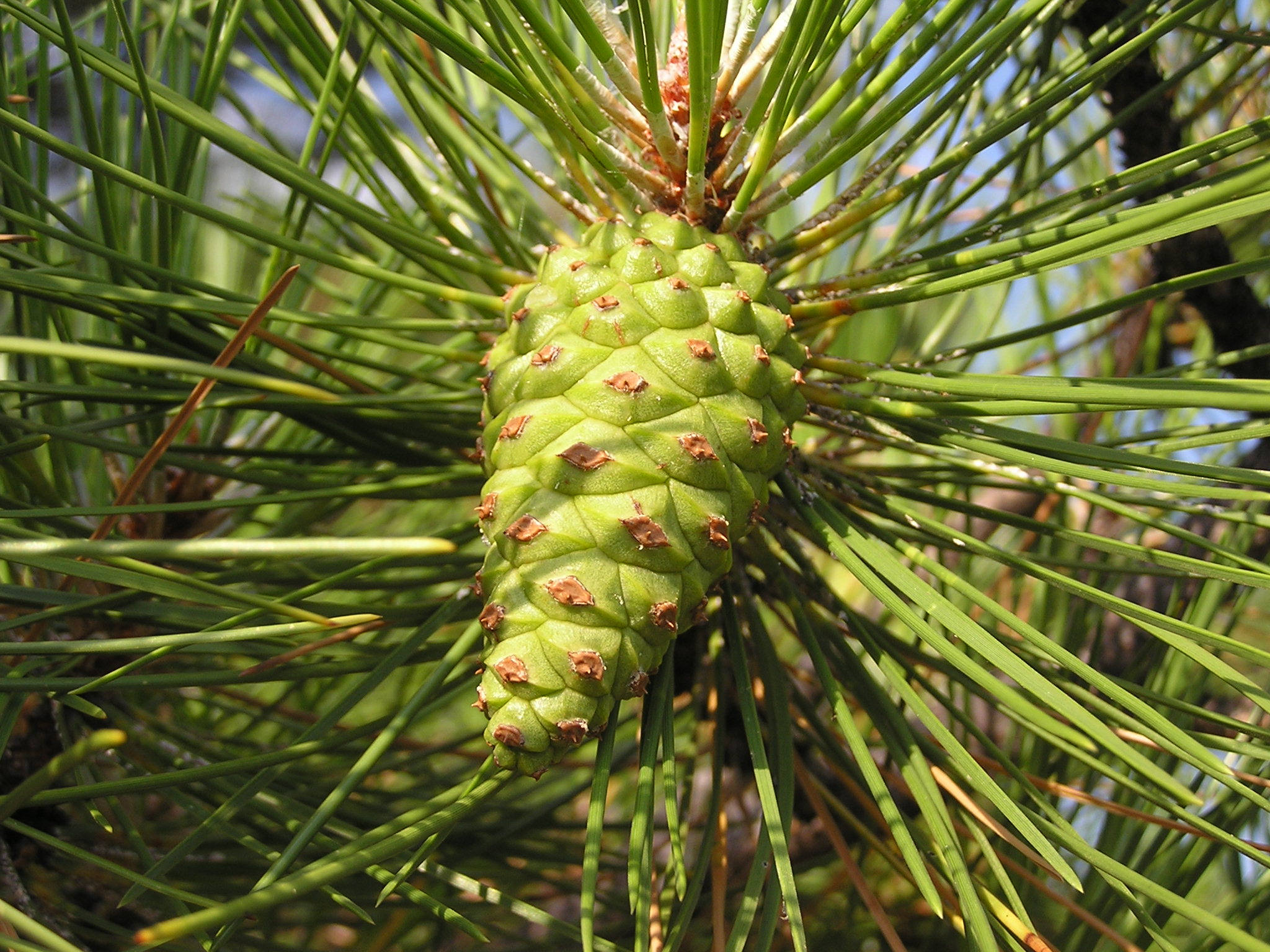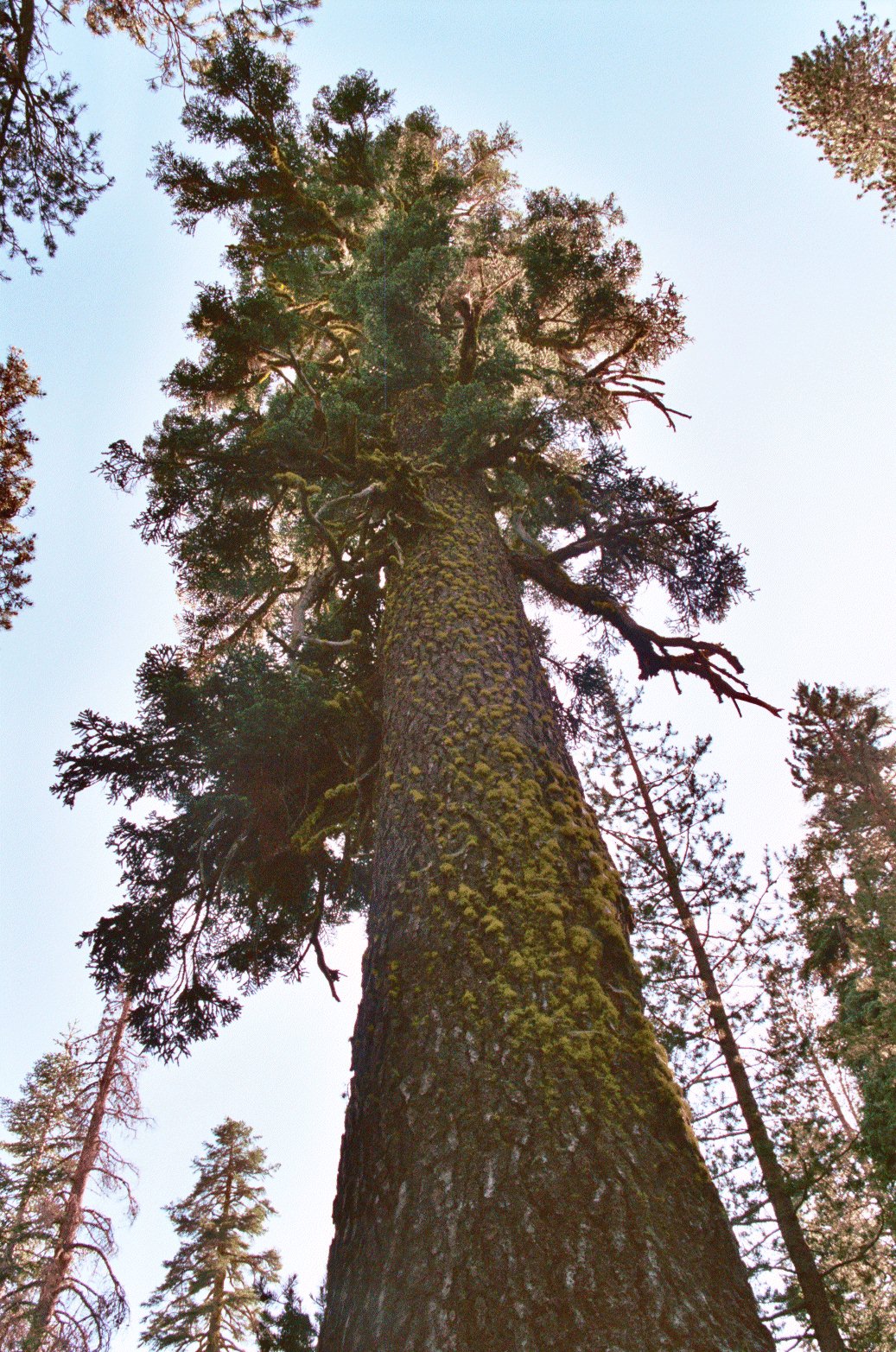|
Taiwan Fir
''Abies kawakamii'' is a species of conifer in the family Pinaceae. It is found only in Taiwan. First described in 1908 by Bunzō Hayata as a variety of ''Abies mariesii'', a high-mountain fir native to Japan; the next year it was elevated to species rank by Tokutarô Itô. ''Abies kawakamii'' is exclusively native to the island of Taiwan, and is one of the southernmost true firs (together with ''Abies fansipanensis, A. fansipanensis'', native to Vietnam, and ''Abies guatemalensis, A. guatemalensis'', from Mexico and Guatemala). It is a high-mountain species occurring in northern and central Taiwan at elevations between 2400 and 3800 m in association with other temperate plants, dominantly conifers, including ''Juniperus formosana'' var. ''formosana'', ''Tsuga chinensis, Tsuga formosana'', and ''Juniperus squamata, Juniperus morrisonicola''. Taiwan fir is a small to medium-sized tree sometimes reaching a height of 35 m and trunk diameter of 1 m. Initially, the bark is scurfy or sc ... [...More Info...] [...Related Items...] OR: [Wikipedia] [Google] [Baidu] |
Conifer
Conifers () are a group of conifer cone, cone-bearing Spermatophyte, seed plants, a subset of gymnosperms. Scientifically, they make up the phylum, division Pinophyta (), also known as Coniferophyta () or Coniferae. The division contains a single extant class (biology), class, Pinopsida. All Neontology, extant conifers are perennial plant, perennial woody plants with secondary growth. The majority are trees, though a few are shrubs. Examples include Cedrus, cedars, Pseudotsuga, Douglas-firs, Cupressaceae, cypresses, firs, junipers, Agathis, kauri, larches, pines, Tsuga, hemlocks, Sequoioideae, redwoods, spruces, and Taxaceae, yews.Campbell, Reece, "Phylum Coniferophyta". ''Biology''. 7th ed. 2005. Print. p. 595. As of 2002, Pinophyta contained seven families, 60 to 65 genera, and more than 600 living species. Although the total number of species is relatively small, conifers are ecology, ecologically important. They are the dominant plants over large areas of land, most notably ... [...More Info...] [...Related Items...] OR: [Wikipedia] [Google] [Baidu] |
Pinaceae
The Pinaceae (), or pine family, are conifer trees or shrubs, including many of the well-known conifers of commercial importance such as Cedrus, cedars, firs, Tsuga, hemlocks, Pinyon_pine, piñons, larches, pines and spruces. The family is included in the order Pinales, formerly known as Coniferales. Pinaceae have distinctive cones with woody scales bearing typically two Ovule, ovules, and are supported as monophyletic by both Morphology (biology), morphological trait and genetic analysis. They are the largest extant conifer family in species diversity, with between 220 and 250 species (depending on Taxonomy (biology), taxonomic opinion) in 11 genera, and the second-largest (after Cupressaceae) in geographical range, found in most of the Northern Hemisphere, with the majority of the species in temperate climates, but ranging from subarctic to tropical. The family often forms the dominant component of Boreal forest, boreal, coastal, and montane forests. One species, ''Pinus merkus ... [...More Info...] [...Related Items...] OR: [Wikipedia] [Google] [Baidu] |
Taiwan
Taiwan, officially the Republic of China (ROC), is a country in East Asia. The main geography of Taiwan, island of Taiwan, also known as ''Formosa'', lies between the East China Sea, East and South China Seas in the northwestern Pacific Ocean, with the China, People's Republic of China (PRC) to the northwest, Japan to the northeast, and the Philippines to the south. It has an area of , with mountain ranges dominating the eastern two-thirds and plains in the western third, where its Urbanization by country, highly urbanized population is concentrated. The combined Free area of the Republic of China, territories under ROC control consist of list of islands of Taiwan, 168 islands in total covering . The Taipei–Keelung metropolitan area, largest metropolitan area is formed by Taipei (the capital), New Taipei City, and Keelung. With around 23.9 million inhabitants, Taiwan is among the List of countries and dependencies by population density, most densely populated countries. Tai ... [...More Info...] [...Related Items...] OR: [Wikipedia] [Google] [Baidu] |
Bunzō Hayata
was a Japanese botanist noted for his Taxonomy (biology), taxonomic work in Japan and Taiwan under Japanese rule, Japanese Taiwan. Early life Hayata was born to a devout Buddhist family in Kamo, Niigata on December 2, 1874. When he was 16, Hayata became interested in botany, and he joined the Botanical Society of Tokyo in 1892. His schooling was delayed by a series of family tragedies, and he graduated middle school at the age of 23. He then attended high school and began to collect botanical samples.Ohashi, Hiroyoshi (2009). Bunzo Hayata and His Contributions to the Flora of Taiwan' Taiwania, 54(1): 1-27 Hayata enrolled in the botany program at the Imperial University of Tokyo in 1900. He graduated in 1903, and entered the graduate program under Jinzō Matsumura. He was appointed assistant at the Koishikawa Botanical Gardens in 1904. In 1907, he completed his Doctor of Sciences degree. Career In 1908, Hayata was promoted to lecturer in the Department of Botany at the Imperial ... [...More Info...] [...Related Items...] OR: [Wikipedia] [Google] [Baidu] |
Abies Mariesii
''Abies mariesii'', also known as Maries' fir and , is a species of fir native to the mountains of central and northern Honshū, Japan. It grows at altitudes of 750–1,900 m in northern Honshū, and 1,800–2,900 m in central Honshū, always in temperate rain forest with high rainfall and cool, humid summers, and very heavy winter snowfall. Description It is a medium-sized evergreen coniferous tree growing to 15–30 m tall with a trunk diameter of up to 0.8 m, smaller and sometimes shrubby at tree line. The leaves are needle-like, flattened, 1.5–2.5 cm long and 2 mm wide by 0.5 mm thick, matt dark green above, and with two white bands of stomata below, and slightly notched at the tip. The leaf arrangement is spiral on the shoot, but with each leaf variably twisted at the base so they lie flat to either side of and above the shoot, with none below the shoot. The shoots are orange-red with dense velvety pubescence. The cones are 5–11 cm long and 3–4& ... [...More Info...] [...Related Items...] OR: [Wikipedia] [Google] [Baidu] |
Abies Fansipanensis
Firs are evergreen coniferous trees belonging to the genus ''Abies'' () in the family Pinaceae. There are approximately 48–65 extant species, found on mountains throughout much of North and Central America, Eurasia, and North Africa. The genus is most closely related to '' Keteleeria'', a small genus confined to eastern Asia. The genus name is derived from the Latin "to rise" in reference to the height of its species. The common English name originates with the Old Norse ''fyri'' or the Old Danish ''fyr''. They are large trees, reaching heights of tall with trunk diameters of when mature. Firs can be distinguished from other members of the pine family by the way in which their needle-like leaves are attached singly to the branches with a base resembling a suction cup, and by their cones, which, like those of cedars, stand upright on the branches like candles and disintegrate at maturity. Identification of the different species is based on the size and arrangement of ... [...More Info...] [...Related Items...] OR: [Wikipedia] [Google] [Baidu] |
Abies Guatemalensis
''Abies guatemalensis'', the Guatemalan fir or ''pinabete'', is an evergreen tree native to Central America and is the southernmost member of the genus '' Abies'' being spread to the south lower than 14° N. Its range is from southern (less from western and central) Mexico in the north to Honduras and El Salvador in the south. It is a warm-loving and moisture-loving tree of the tropical mountain coniferous and mixed cloud forests of these countries. The Guatemalan fir is an almost completely non-frost-resistant tree. Due to logging and loss of habitat, the tree is considered threatened and is protected in CITES Appendix I. Description ''A. guatemalensis'' is a conical tree growing 20 to 35 meters tall and 60 to 90 cm in girth. The branches grow largely horizontally. The bark is a blackish-brown and is divided into plates. The branchlets are reddish-brown to deep blackish-red and pubescent. The buds are globular-ovoid, resinous, and roughly 5 mm in length. The leaves ... [...More Info...] [...Related Items...] OR: [Wikipedia] [Google] [Baidu] |
Juniperus Formosana
''Juniperus formosana'', the Formosan juniper, is a species of conifer in the family Cupressaceae. It is a shrub or tree to tall, found in China (from Tibet in the west to Zhejiang ) , translit_lang1_type2 = , translit_lang1_info2 = ( Hangzhounese) ( Ningbonese) (Wenzhounese) , image_skyline = 玉甑峰全貌 - panoramio.jpg , image_caption = View of the Yandang Mountains , image_map = Zhejiang i ... in the east) and in Taiwan. References formosana Trees of China Trees of Taiwan Flora of Tibet Least concern plants Taxonomy articles created by Polbot {{conifer-stub ... [...More Info...] [...Related Items...] OR: [Wikipedia] [Google] [Baidu] |
Tsuga Chinensis
''Tsuga chinensis'', commonly referred to as the Taiwan or Chinese hemlock, is a coniferous tree species native to China, Taiwan, and Vietnam. The tree is quite variable and has many recognised varieties, though some are also maintained to be separate species by certain authorities. The tree was recently discovered in the mountains of northern Vietnam, making that the southernmost extension of its range. Description ''Tsuga chinensis'' is a large tree with bark that is a blackish brown in colour. The scaly bark has irregular longitudinal breaks, and lenticels that are very inconspicuous. The outer bark is about 6 mm thick with alternating tiered layers of pale yellowish brown corky bark, and brown lignified fibrous bark. The newly formed periderm is a purplish red. The inner bark is about thick and pale reddish brown in colour. It is fibrous in texture with minute, almost inconspicuous sclereid, or stone cell groups. The cambium as well as the newly formed phloem are nearl ... [...More Info...] [...Related Items...] OR: [Wikipedia] [Google] [Baidu] |
Juniperus Squamata
''Juniperus squamata'', the flaky juniper, or Himalayan juniper is a species of coniferous shrub in the cypress family Cupressaceae, native to the Himalayas and China. It represents the provincial tree of Khyber Pakhtunkhwa (unofficial). Description It is an evergreen shrub (rarely a small tree) reaching tall (rarely 15 m), with flaky brown bark, and a prostrate to irregularly-conical crown. The leaves are broad, needle-like, long, arranged in six ranks in alternating whorls of three, and often strongly a glaucous blue-green in color. The cones are berry-like, globose to ovoid, 4–9 mm long, and 4–6 mm diameter. Often, they are a glossy black and contain one seed; they are mature in about 18 months. The male cones are 3–4 mm long and shed their pollen in early spring. It is largely dioecious, with pollen and seed cones produced on separate plants, but occasionally monoecious. Taxonomy Three to five varieties are accepted, with treatment differing between ... [...More Info...] [...Related Items...] OR: [Wikipedia] [Google] [Baidu] |
Abies
Firs are evergreen coniferous trees belonging to the genus ''Abies'' () in the family Pinaceae. There are approximately 48–65 extant species, found on mountains throughout much of North and Central America, Eurasia, and North Africa. The genus is most closely related to '' Keteleeria'', a small genus confined to eastern Asia. The genus name is derived from the Latin "to rise" in reference to the height of its species. The common English name originates with the Old Norse ''fyri'' or the Old Danish ''fyr''. They are large trees, reaching heights of tall with trunk diameters of when mature. Firs can be distinguished from other members of the pine family by the way in which their needle-like leaves are attached singly to the branches with a base resembling a suction cup, and by their cones, which, like those of cedars, stand upright on the branches like candles and disintegrate at maturity. Identification of the different species is based on the size and arrangement o ... [...More Info...] [...Related Items...] OR: [Wikipedia] [Google] [Baidu] |



